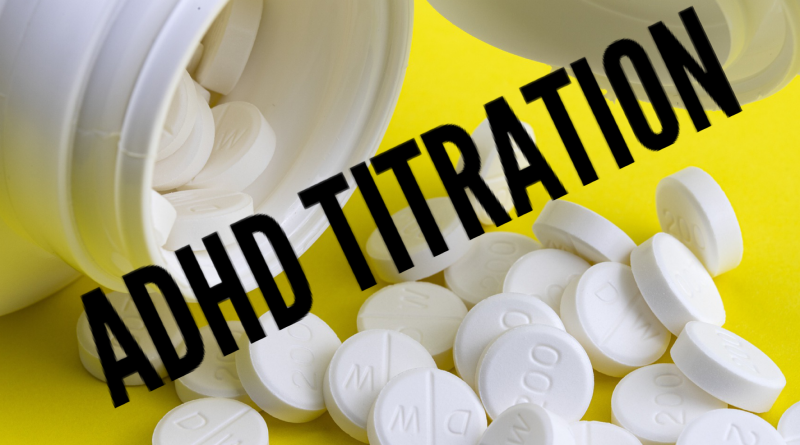Titration: First steps in ADHD medication
Following my diagnosis with combined type ADHD I was recommended medication as a course of action. This is part of a series of blogs on getting assessed for ADHD so check out the overview page for links to the other related posts. When I started this process that was not what I wanted. I did not want to meed a tablet to help me perform at my best. Which is odd because I wear glasses to help me read better. I take antihistamines to help with hay fever. I have an inhaler to help with respiratory function. What makes medical assistance with my physical performance different to medication for my mental performance? Stigma. News headlines of kids overmedicated on Ritalin. Stories of ADHD being trendy and on topic and people getting a diagnosis to get access to controlled drugs.
Speaking with a number of people who have been through this I came to understand that medication is the single most effective aid to manage the negative symptoms of ADHD. One colleague shared how it’s not a silver bullet to play life on easy mode, but it takes it down from super hard to normal difficulty. The medication also helps other forms of treatment such as coaching and counselling more effective.
Before starting the medication I was sent a blood pressure monitor. I shared the readings to the psychiatrist so they could form a treatment plan. My GP also wanted to check my blood pressure before authorising treatment. The GP was happy to accept the readings I’d taken at home.
What is titration?
The standard go-to first medical approach to ADHD treatment is stimulant medication. Methylphenidate which goes under brand names such as Concerta, Ritalin and others. It is considered the most effective first-line treatment and has the best benefit to unwanted symptoms profile for most people. The dose of this is based on individual metabolism not on height or weight. So the standard regimen is to start on a low dose, monitor the ADHD symptoms and monitor the side effects. If all goes well the dose ramps up, possibly as quickly as weekly, until there is the desired benefit with manageable side effects.
Throughout this process there is reporting back to a clinical team on height, weight, blood pressure, pulse rate, side effects and benefits. Not sure why they ask about hight every week as that’s not covered in the side effects but if I start to get taller I’ll not complain.
Some people don’t respond well to Methylphenidate. Some people have undesirable side effects from Methylphenidate. In these cases alternative drugs will be tried. In some instances a combination of drugs that work differently might also be tried.
For stimulant medication there is also a drug release profile. There is the standard Methylphenidate (or another stimulant) that might wear off quickly and other variants that last longer. This may also be experimented with by your titration team.
Private or NHS Titration
If diagnosed through right to choose you will likely be given the option of private or NHS titration. Private is quicker. I waited 3 months for NHS titration. If you go private you may have to pay for the clinical support wrapper and you will have to pay private prescription charges. On completing private titration some people have reported problems with transitioning the continuation of the medication to their GP.
Getting ready for Titration
There were more forms to complete before titration started. Questions about alcohol and caffeine consumption amongst other things. I had set about not drinking 4 nights a week when I was assessed but in the 3 months that followed I didn’t once hit that goal.
I received a note on my file. I was strongly recommended to reduce my caffeine intake. It was also suggested that I should reduce my meagre alcohol intake if I wanted to be able to best assess the benefit of the medication. I resolved to stop caffeine and alcohol with immediate effect for the duration of titration. I do better with absolutes than moderation. I resolved this before discovering some people spend 12 months in titration. And even the first 6 weeks would include my holiday in the sun. Who doesn’t like a cold beer on the beach?
The final decision was how I wanted to receive the medication. I could have the tablets sent to me or I could have the prescription sent to me or a pharmacy. I didn’t understand the pro’s and cons (because I didn’t read all the info). I eventually worked out, for reasons I don’t understand, that getting the tablet sent to me would be NHS prescription charges and getting the prescription sent would be a private one so I’d have to pay more.
I opted to get the medication sent to me to save money. The downside here is that they are spent on a signed for delivery as they are controlled drugs. This means you need to be in to receive them. I could make that work but I know others can’t. This is complicated by (for my provider at least) the requirement to ship to a residential address – so you can’t get them sent to work

